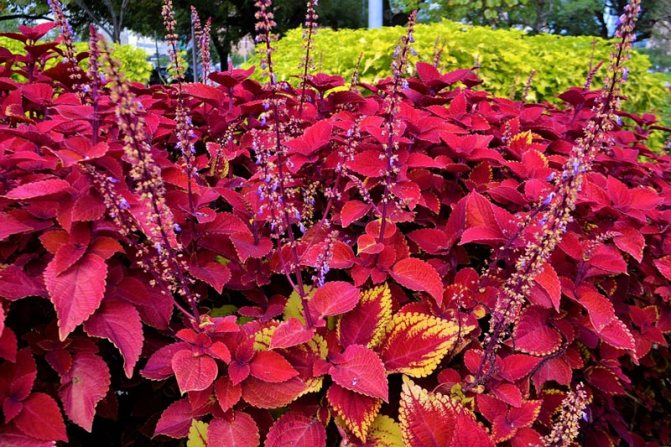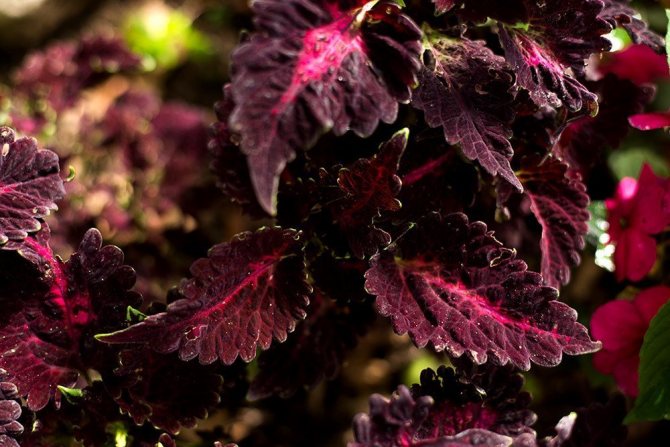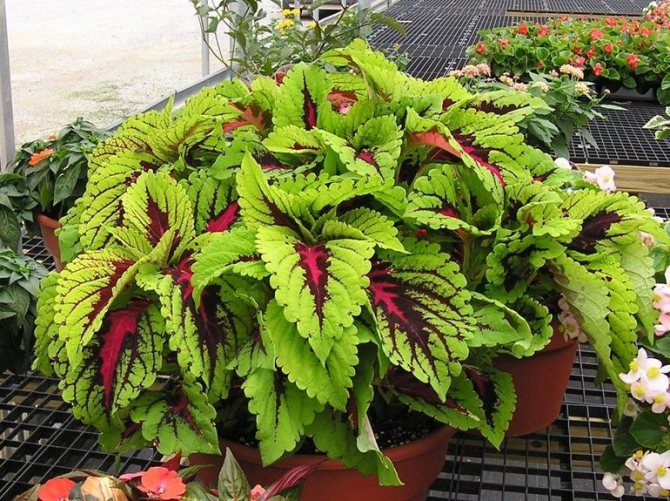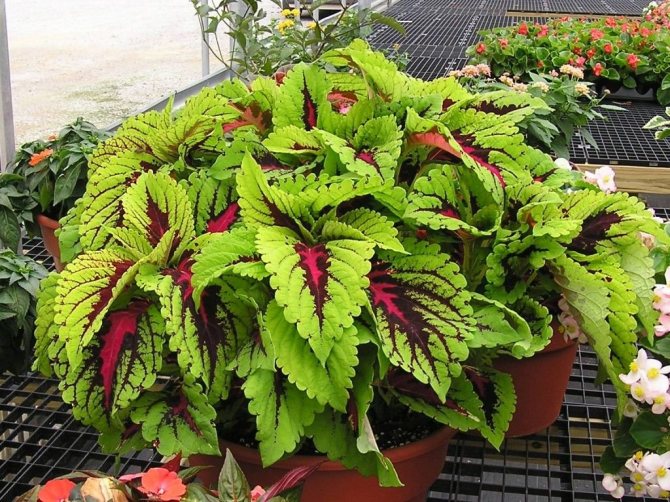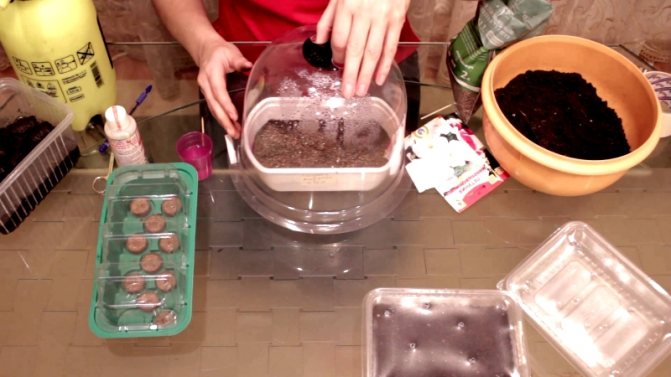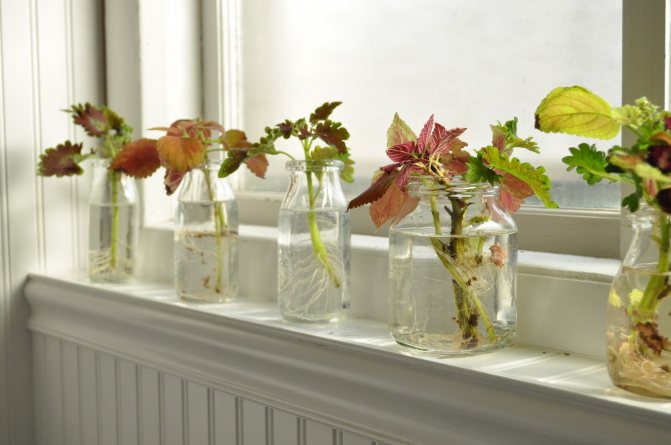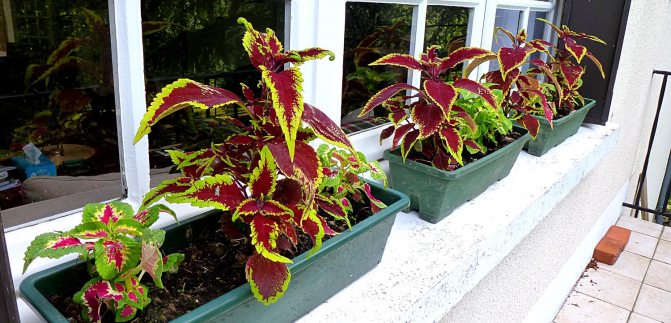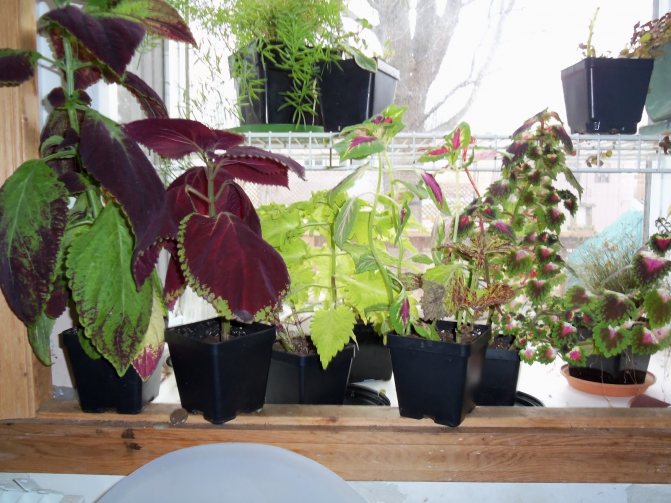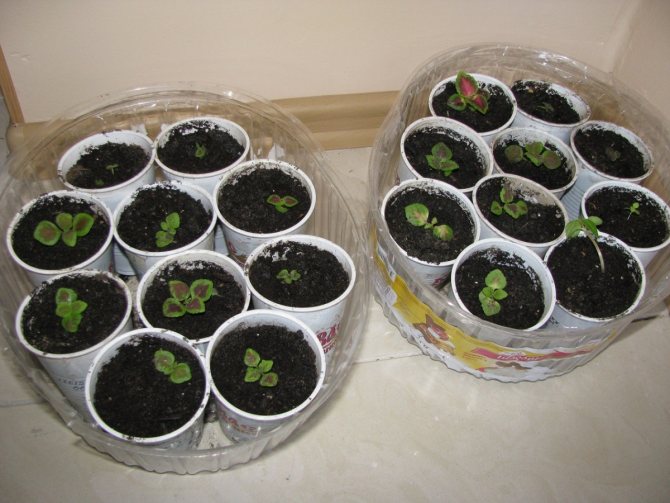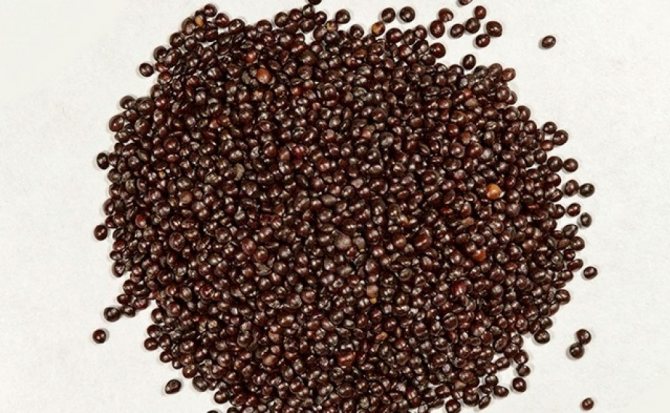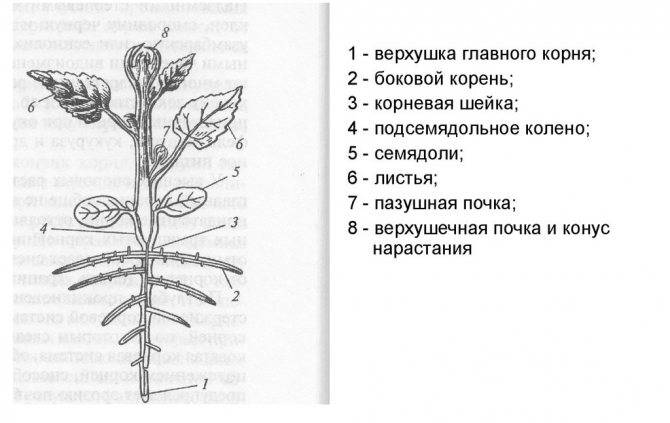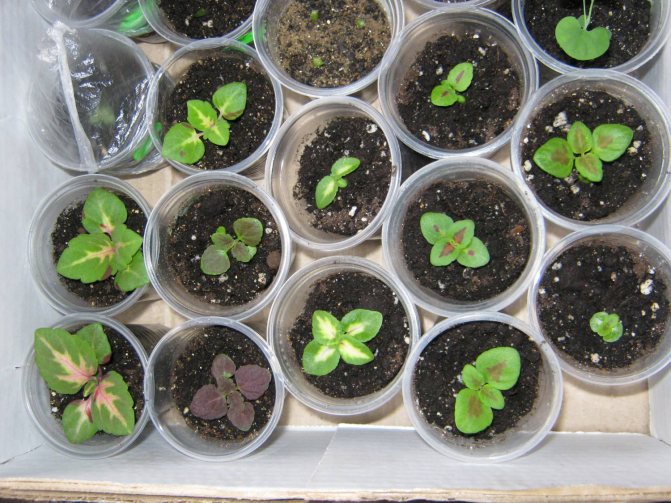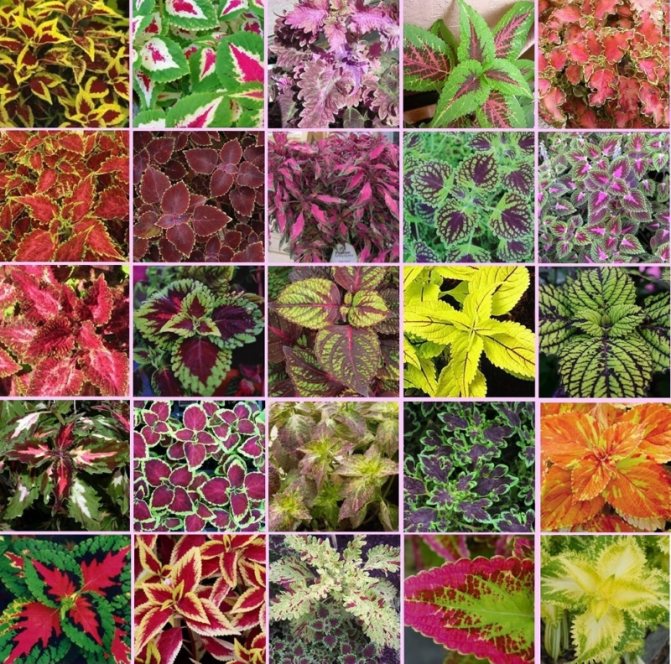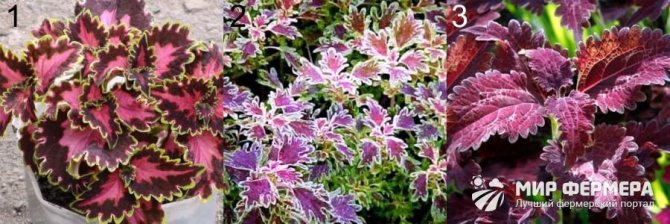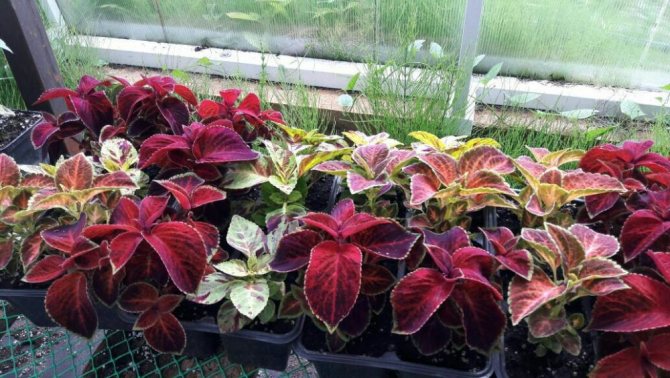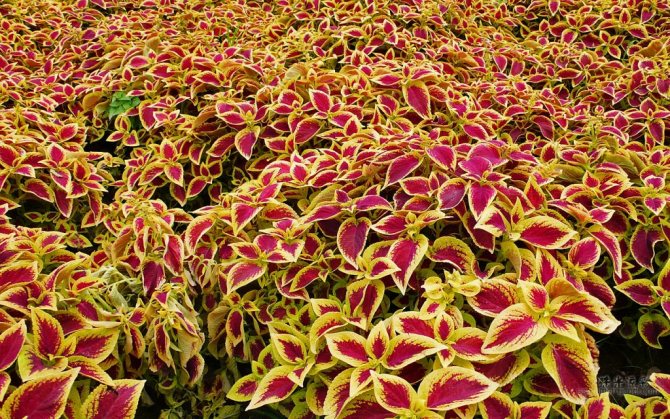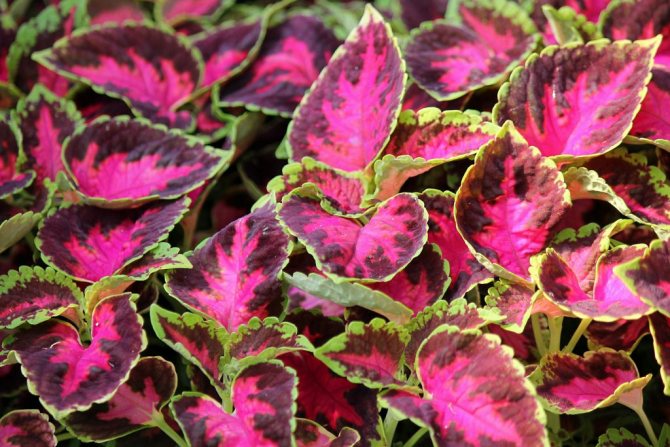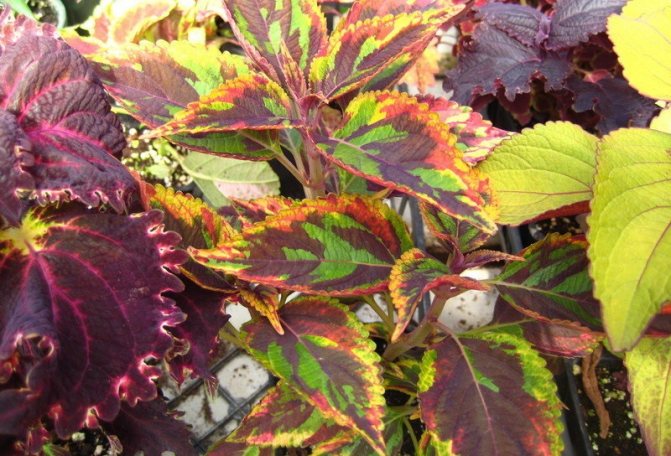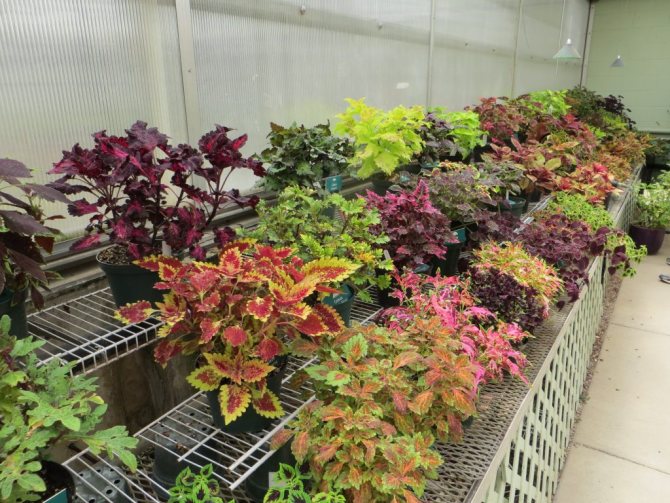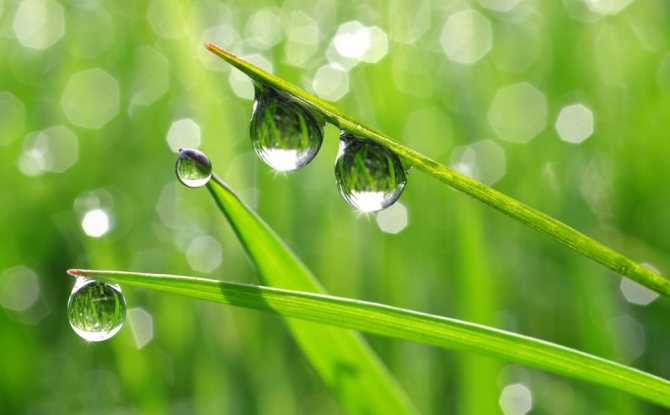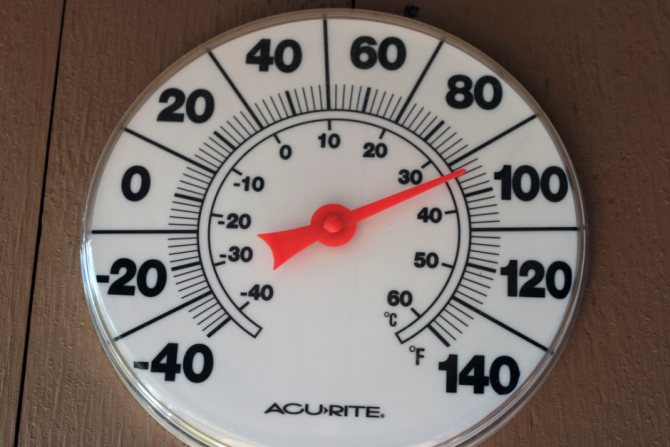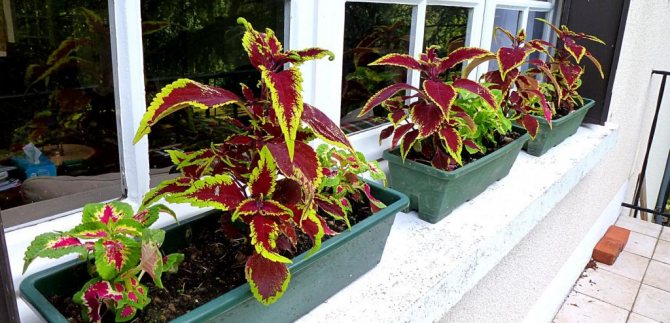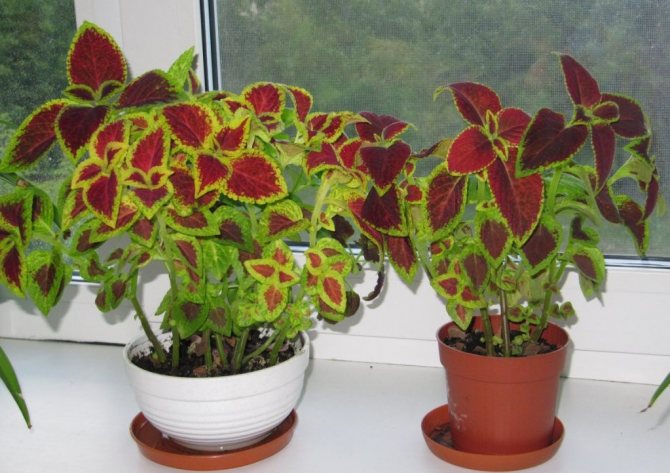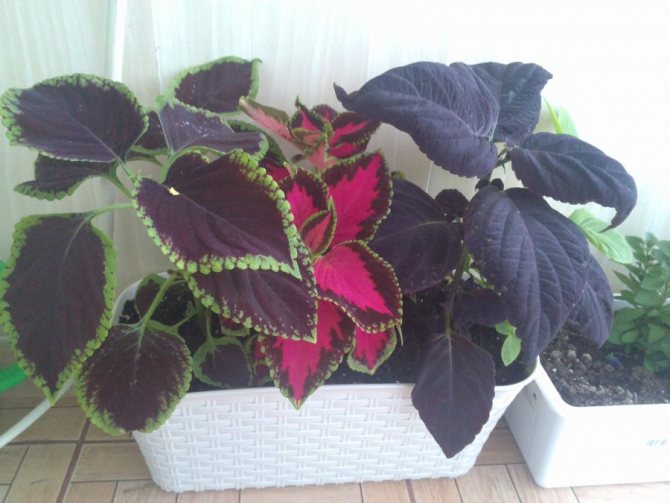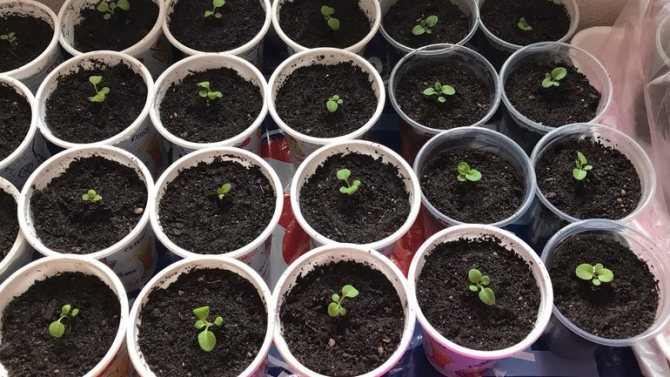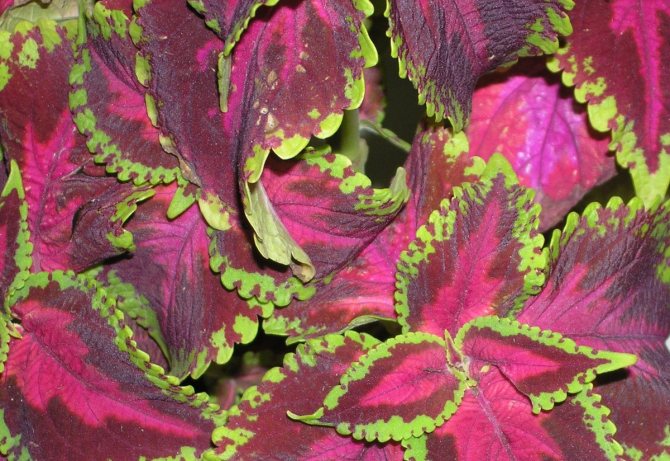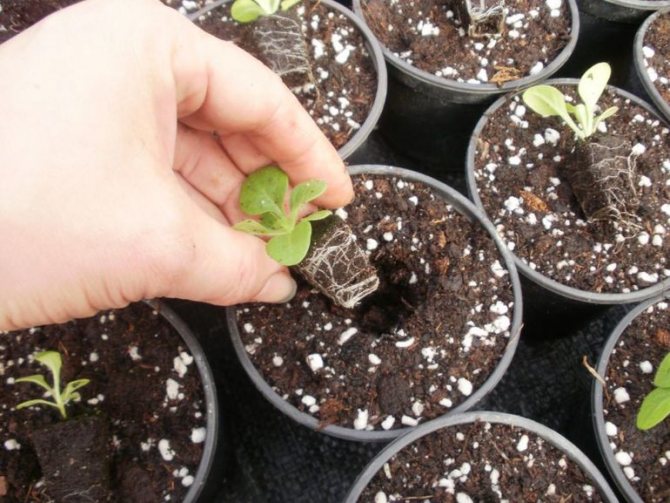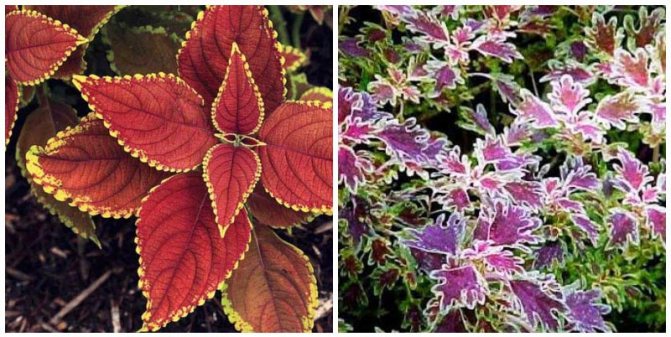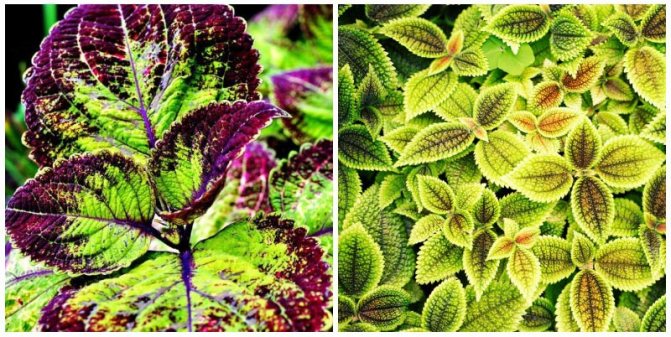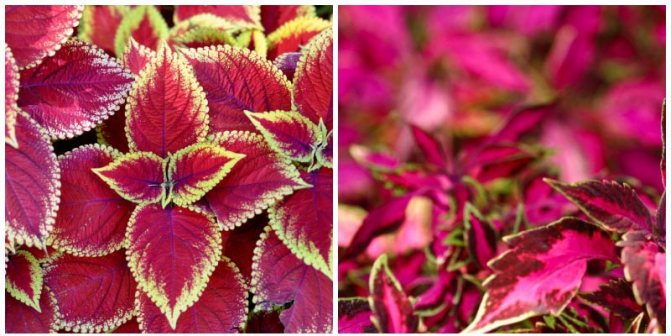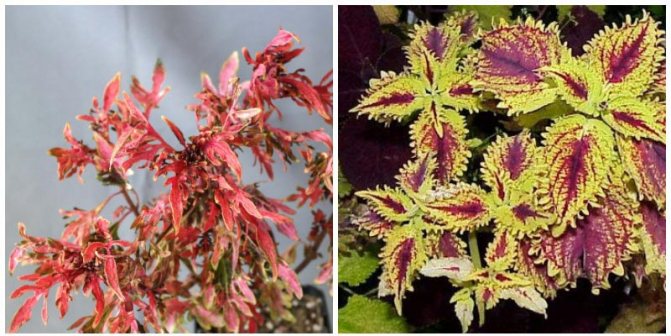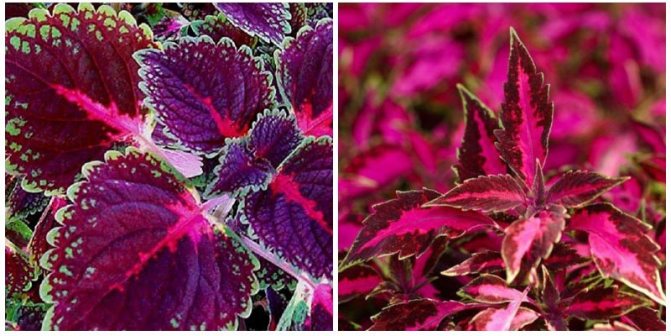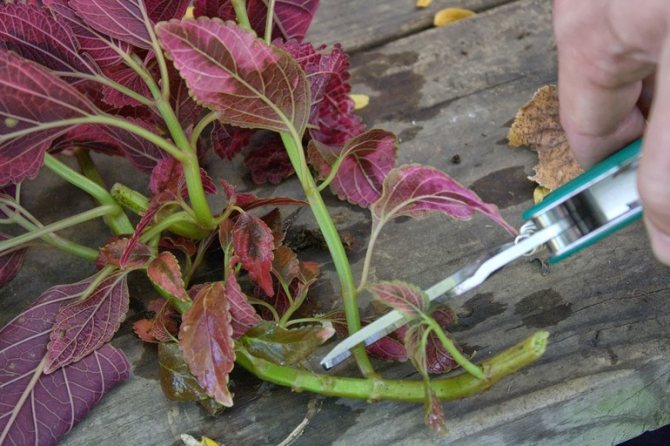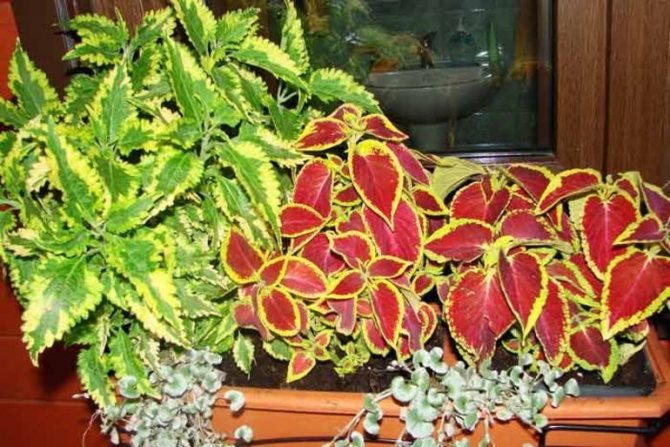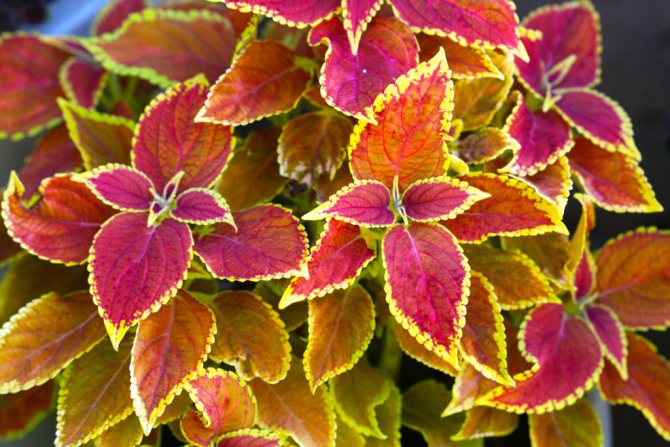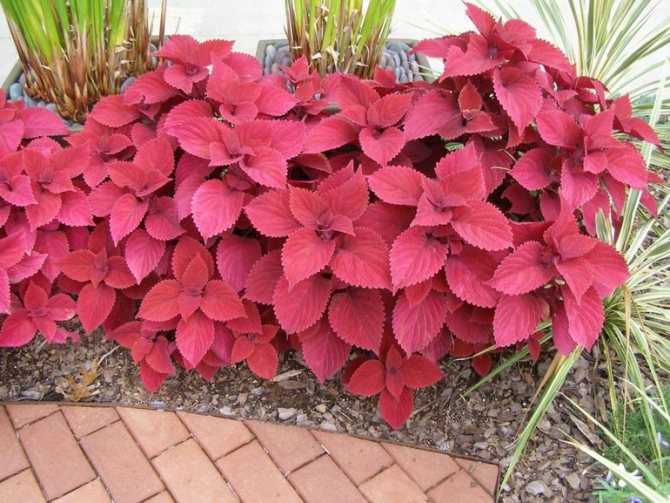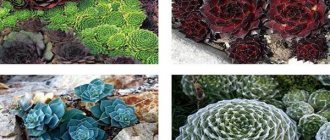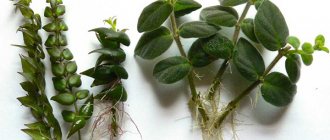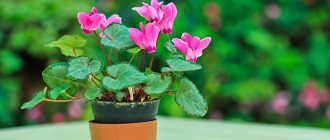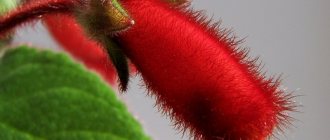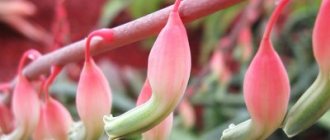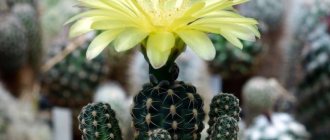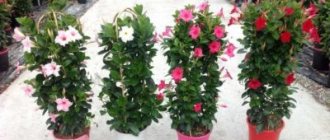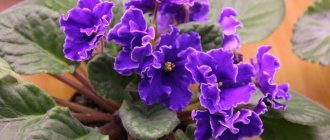Coleus home flower is a perennial herb belonging to the Lamb family (in other words - Labiaceae). Its homeland is located in the Asian and African tropics, it is also found in the Indian Archipelago, it also grows in Australia.
The coleus plant is a bit like the familiar nettle, you will be convinced of this by studying the photos of flowers accompanying the article. This is a lush semi-shrub with ribbed stems 30-50 cm high. Most often it has a heart-shaped leaf blade with spectacular patterns and small denticles along the edge.
The leaves are pleasantly velvety to the touch, and bright and contrasting in color. The foliage shades are striking in their variety: the color of the coleus can be purple, burgundy, red, pink, yellow, green, purple.
Small flowers of Coleus are blue or purple in color with some variability in shades. They are collected in complex inflorescences that resemble spikelets. Florists call them "panicles" and try to remove them as quickly as possible, since such "arrows" do not carry decorative value, but they take away a lot of energy from the plant.
Conditions for growing Coleus at home
The table lists the basic requirements for flower growth.
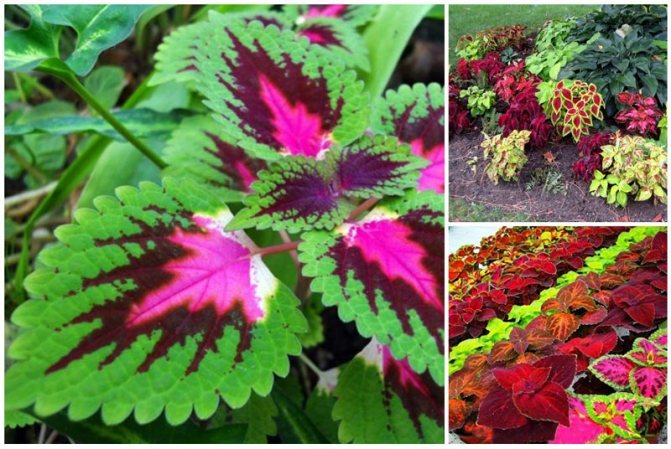
| Indicators | Description |
| Lighting | Avoid direct sunlight, in summer it is better to take it outside (balcony). |
| Optimum temperature | +18 ° C in summer, +12 ° C in winter. |
| Watering | Spring-autumn - abundant, lukewarm water, while it is necessary to control the dryness of the top layer in the pot. In winter - moderate, do not allow the soil to dry out. |
| Humidity | High, constant spraying of leaves is necessary. In winter, the ideal place for a plant is the kitchen, where conditions are the best during this period. |
| Priming | Unpretentious, any soil mixture is suitable, minerals are added if necessary. |
With a lack of light, the plant begins to grow rapidly upward and lose foliage, and its excess leads to a stop in growth and loss of saturation in color. Therefore, it is very important to ensure that the light is supplied correctly. The temperature regime is also important - the flower reacts very sharply to its changes. The nitrogen content in the soil contributes to an increase in color saturation.
You can increase the humidity by placing a tank filled with wet expanded clay next to the pot.
Care errors and their elimination
The table contains useful information for flower growers about the problems in growing Coleus and methods for their elimination:
| Problem | The reasons | Decision |
| Lack of growth, dull coloration | Nutrient Deficiency | Feed the plant in the spring and summer |
| Leaves wither | Poor watering, dry air, temperature drops | Do not allow the earth com to dry out, ensure a stable temperature in the room |
| Decay of roots and stems | Excessive watering, poor drainage | Transplant the plant into a new pot with good drainage system, adjust watering |
| Pulling shoots | Lack of lighting | Place the flowerpot in a lighter place |
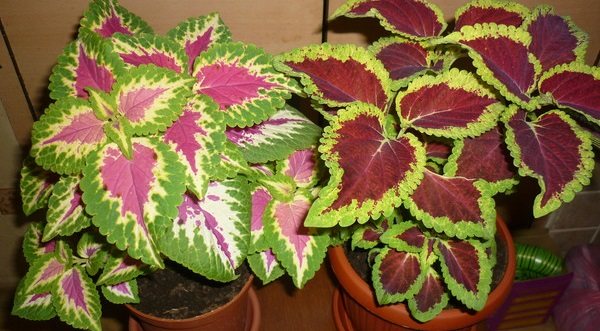

Coleus transplant
This process takes place in the spring after pinching. The acidity of the prepared soil should be in the range of 6-7 pH.However, it does not need to be moved many times, because its root system is poorly developed.
The plant is considered an annual, but if certain conditions are met, it can grow for more than one year, only it will be necessary to periodically change the soil, and if the pot becomes small, then transplant. In this case, it is necessary to look well at the roots for the presence of bad ones (rotten or dead), remove the old soil as much as possible.
The adopted homeland of indoor coleus
Since the homeland of Coleus is warm and humid tropics, in moderate climatic conditions it does not tolerate winter, therefore it is often grown at home or in a greenhouse. Indoor Coleus is still one of the most demanded colors today.
Its many varieties with brightly colored foliage are not only great, they are also vigorous and easy to care for.
Today, Coleus is experiencing a rebirth, this time as an element of landscape design. Rapid growth and ease of reproduction, including by cuttings, allows it to be used as a spectacular annual plant. You can see that the plants are planted in the flowerbed as a parterre composition, which is made up of bushes of different colors.
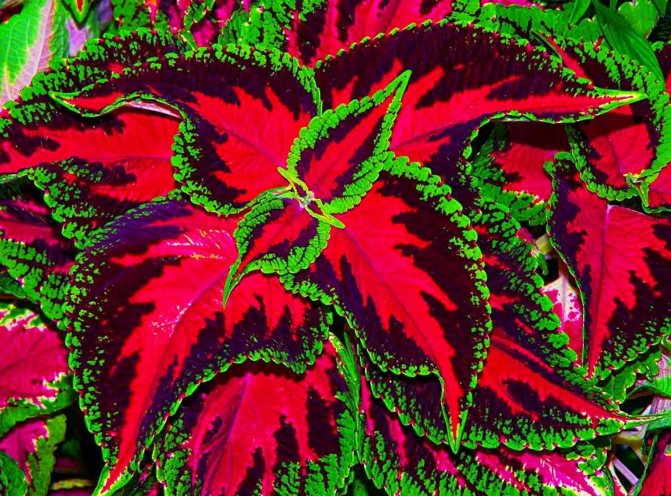

The bushes lend themselves well to formation, due to which it is easy to maintain in such compositions:
- Definition;
- Accuracy;
- Smooth texture of the pattern.
So, on the island of Java, one of the species of the Bloom plant with black oval-shaped tubers has long been cultivated as food. In Sudan, the Nigro variety is grown with black tubers the size of a potato and red fluffy foliage. Of the abundance of coleus species, two are usually used in decorative floriculture: Blum's coleus and Vershaffelt's coleus, imported from the island territory of Java.
Coleus pruning
The flower should be subjected to this procedure systematically. The following reasons can be distinguished for its accomplishment:
- better branching, which subsequently leads to the creation of a large bush (produced half a month after diving);
- planting by cuttings (cut off older sprouts);
- decrease in growth (cut off the top, thereby forcing it to grow in width, and not in height, giving the plant splendor);
- planned haircut (done on flowers older than a year, cut off all shoots, leaving only 2-3 processes);
- shaping, decoration (cut off at the formed bush).
Home care
Coleus is one of the most unpretentious indoor crops. Even an inexperienced florist can cope with it.
Location and lighting
The culture prefers to grow in bright places. The shade and number of leaves directly depends on the light intensity. The more it is, the more abundant Coleus is overgrown with foliage.
On a note! In the spring and summer, you need to place the flowerpot under a bright, diffused light. Shade from the direct sun during the day. In winter, when the sun is not so aggressive, it is recommended to put it on south-facing windows.
Priming
Coleus is unpretentious to the composition of the soil. For it, you can use an earthen mixture of different compositions. The main thing is that it contains a lot of nitrogen. It contributes to the fact that the crown of the plant becomes brighter and richer. The plant feels good in sod, leafy and garden soil. The acidity should be neutral or slightly acidic.
Optimal mix composition:
- turf (2);
- leafy ground (2);
- humus (1);
- sand and peat (1 part each).
Planting and transplanting
It is necessary to transplant Coleus every 2-3 years. The root system of the plant is very sensitive, you need to act very carefully when transplanting.
Transplant procedure:
- Prepare a pot a couple of centimeters larger than the previous one. Lay drainage at the bottom (fine expanded clay, broken brick shards).
- Sprinkle the drainage on top with a thin layer of soil, the composition does not differ from the previous one.
- Gently remove the plant from the pot.Do not touch the earth lump.
- Place it in the center of the new pot. Sprinkle the voids with soil. Water it lightly and place to root in a shaded area.
Visual video - instructions for transplanting Coleus:
Temperature and humidity
Coleus responds well to high temperatures in summer if watered on time. If the temperature drops sharply, the plant may suffer. If in summer it falls below + 10-15 degrees, the growth of culture slows down.
Coleus needs high humidity. To increase it, you need to regularly spray the bush. You can use a pallet with wet expanded clay or pebbles.
Watering
Water the plant regularly. It is impossible for the soil in which the coleus grows to dry out. But it is also not worth pouring it in. In winter, the amount of watering is reduced. They are carried out only after the top layer has dried.
Top dressing and fertilizers
If the Coleus is grown in a pot, and not in the open field, periodic feeding will not harm it. For this, mineral fertilizers for deciduous crops are suitable, which are applied every 2-3 weeks during the growing season.
Flowering period
Most species do not bloom very brightly, so the flowers are not particularly interesting in terms of decorativeness. They are complex inflorescences collected from bluish-purple flowers. When a plant is in bloom, it takes a lot of energy. Therefore, it is recommended to remove inflorescences at the stage of formation.
Pruning
In winter, Coleus becomes less attractive. Therefore, with the onset of spring, it is better to cut it off. Remove dry, damaged shoots. Healthy stems can be shortened to make the bush more attractive. Pruning can be carried out throughout the growing season, shape at your own discretion. It is recommended to pinch the buds. This stimulates more lush flowering.
Reproduction of Coleus
This process is very easy, their germination rate is 100%. In order to avoid the loss of the sophistication of the leaves, it is propagated by seeds (diving) and cuttings (vegetative method).
Sowing seeds, small in size, occurs in the spring in small clay cups (bowls), putting a prepared peat substrate on the bottom and pouring some sand on top. The first sprouts will appear only after two weeks, after which they are transplanted into small boxes at intervals of 2 × 2 cm, while the soil must be combined: leaf, peat, turf, sand.
It is advisable to include a drainage layer (you can use small expanded clay or small pieces of broken brick) in order to avoid stagnant water.
After the formation of 1-2 leaves, the plant is transplanted one by one into pots 7 cm high, and the composition of the earth does not change. Then, after a month, it is moved into larger pots (9-11 cm). In order to increase the number of branches on the coleus, pinching is performed, that is, pruning of the apical shoots. After six months, the grown shoots can be used to decorate a room or flower beds.
Cuttings begin in late winter (February) and ends in May. A specially detached part, approximately 10 cm long, is planted in distribution boxes. The appearance of roots is observed already at 8-12 days. After that, it is moved into a pot 9 cm high. This method is the easiest and most reliable, however, when planting with seeds, the number of seedlings will turn out to be larger.
The maintenance of the plant provides for timely watering, high-quality lighting.
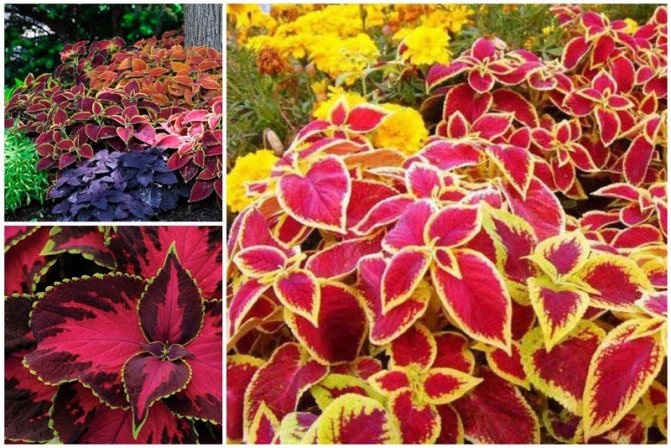

Description of the plant
The name "koleus" comes from the Greek word for "case", and it was obtained because of the special arrangement of the flower. In it, the staminate threads grow together, visually forming a kind of case. Currently, there is some confusion about the correct name of the plant and its classification.
For quite a long time, Coleus belonged to a separate genus Coleus.However, relatively recently, its generic affiliation was revised and all its decorative varieties were attributed to the genus Shporotsvetnik.


Coleus of different varieties
Until now, in the literature, you can find different names for the same plants, but belonging to different genera. There is even a whole table of synonyms, created so that growers do not make mistakes, calling the same species by different names. So, for example, one of the species - Coleus Forskolia "officially" is now called Bearded Sparrow.
Traditionally, almost all decorative coleus in floriculture are called coleus, but sometimes some meticulous author will definitely mention their new, "botanical" name. Coleus is a bushy plant with a dozen stems that are woody at the base.... The height of domestic plant forms rarely exceeds one meter. Coleus stems are strong, with a distinct ribbed structure.


Rasteria stem with leaves and inflorescence
Coleus flowers are of no interest to flower lovers - they are small, most often blue or blue, collected in spike-type inflorescences.
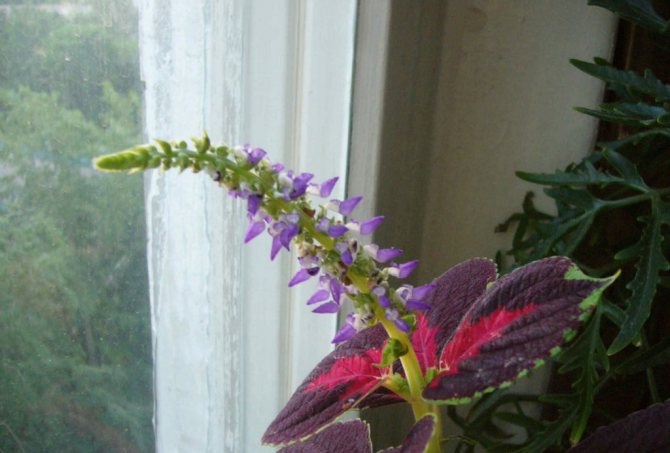

Coleus flowers close up
The main decoration of the plant is the leaves. They are paired, from 6 to 15 cm long, most often heart-shaped, but they are also oval in shape. In most species, the leaves are pointed; they also have subtle pubescence. Outwardly, the leaves look like nettles, so the Coleus has another common nickname - “nettle”.
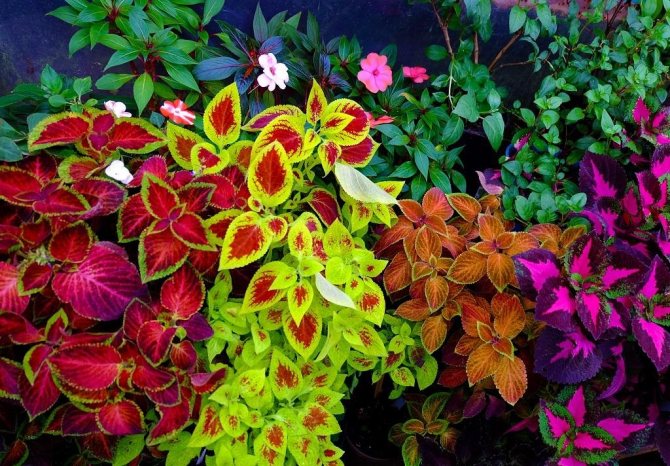

The variety of colors of Coleus leaves is amazing
The root system of the plant is fibrous, but not too extensive, although its soft roots can penetrate deep enough.
In fact, it is a perennial and under natural conditions it can grow in one place for several decades, since it is absolutely unpretentious to external conditions. In our climate, even in the southern regions, it cannot winter outdoors. Already when the temperature drops below + 8 ° C, irreversible processes begin in the plant, it first loses its foliage, and then dies completely.
In home and greenhouse conditions, it feels relatively good. However, the combined effect of light, air and heat in greenhouse conditions is a little lacking. The plant will grow relatively well and even bear fruit, however, and will not be able to repeat, for example, the size of its counterparts growing in the tropics.
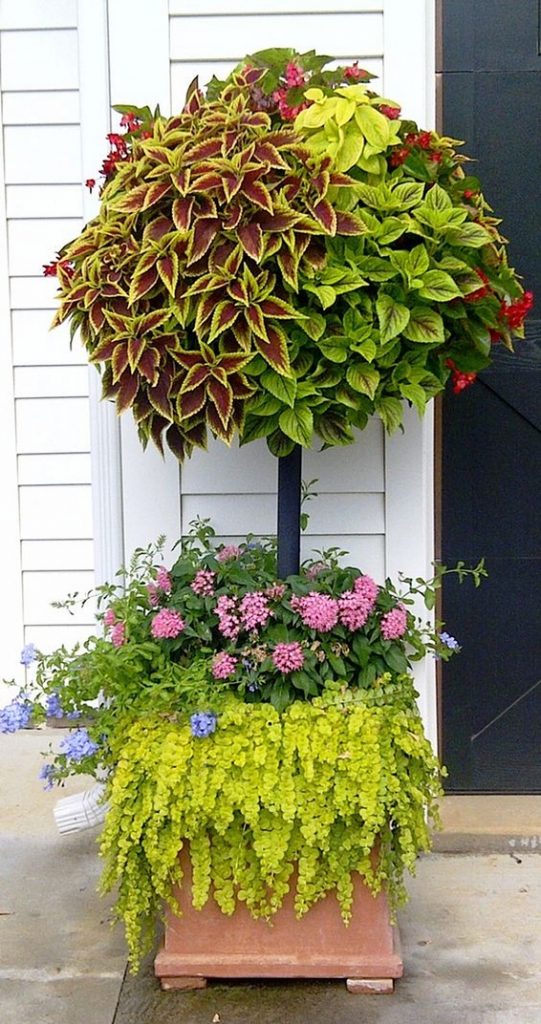

Coleus in the form of a trunk
It is believed that this does not play a special role, since the coleus is used in decoration, as a plant of the lower and middle tiers. Some even refer to it as a cover plant in design. But this is a bit different. Coleus perfectly perceive pruning of stems and foliage and standard cultivation is applicable to them. Therefore, many growers do not leave their efforts to remove coleus, which at home reach the size of species growing in the wild.
back to menu ↑
See also: Indoor flower "Bride and groom" or campanula: description, care, reproduction and possible diseases (50 Photos) + Reviews
Problems when growing Coleus
When keeping a plant, slight difficulties may arise, which are shown in the table.
| Problems | The reasons |
| Slow growth. | Lack of beneficial fertilizers. |
| Loss of foliage. | Low temperature, draft. |
| Tarnished leaves. | Lack of light. |
| Rotting stem from below. | Lack of a drainage layer in the soil. |
| The tips of the foliage turn brown. | Insufficient humidity, poor watering. |
| Spots appeared. | Being in direct sunlight. |
| Rolling leaves. | Infection with parasites. |
The plant is not considered poisonous, it is safe even if swallowed. Insects can cause harm: aphids, whiteflies, spider mites, scale insects. They appear in very dry indoor air.If pests are found, the affected areas are cut off, and the flower itself is treated with an insecticide.
How to choose a Coleus in a store
Before you buy Coleus in a store, decide which of the many varieties you want to buy. When choosing a plant, carefully examine the trunk: there are no rotten or damaged areas that can cause subsequent diseases.
The leaves should also not have dark spots or wet rotting areas, any damage. The leaves should look firm and juicy, with no drying tips or signs of wilting. A healthy and strong plant will tolerate a change of place well and will happily take root in your home.
Mr. Summer resident advises: useful actions when growing coleus
Following a number of simple guidelines, the plant will not cause any difficulties in care:
- The best place for him is a windowsill on the east or west side.
- It is necessary to hide the plant from direct exposure to the sun. The following pattern is observed: the more light it receives, the more leaves it acquires.
- Ideal water for irrigation is settled and at room temperature.
- In winter, it is better to put the flower away from the batteries; it would be a good solution to transfer it to the kitchen. If the room temperature is high, then the number of watering should be increased.
- In the case of a long absence of water in the pot, the coleus will dry out, but it can be quickly brought back to life by abundant watering and spraying.
- It will look great in a circle of monochromatic plants.
- When planting it, it is necessary to be guided by the time of its ripening - it takes about 5 months to get a flower of a bright saturated color.
- It is very sensitive to transfusion, therefore it is necessary to be very careful with its watering.
Coleus is an unpretentious indoor flower, which makes its care at home as convenient as possible and does not cause any particular difficulties.
Common types and varieties of Coleus with a photo
- Coleus Blume (aka Coleus Bluma) is one of the most common varieties. Can reach 80 cm in height. It has ribbed tetrahedral stems. In the photo of the coleus bloom, it can be seen that its ovoid leaves with a pointed apex can have a color of red or yellow shades, as well as white, purple or emerald green with red or yellow spots. The flowers are lilac-lilac in the form of a complex spike;
- Coleus Wizard - a large group of varieties. They grow up to 30 cm in height, have medium-sized leaves with slight pubescence. The group includes such varieties as "Coral Sunrise" ("Coral Sunrise") - shrubs of green, brown and pink; "Velvet Red" - bright red varieties with a pink center and veins of the same color, "Jade" - green plants with a yellow heart;
- Coleus Black Dragon (Black Dragon, Dragon black) - one of the most spectacular varieties and it is easy to see this from the photo. Curly and corrugated dark purple leaves have a bright or pale pink heart. In shape, the leaves of the black dragon coleus can be either oblong or of medium length, fringed at the edges. The inflorescences are blue and spike-shaped;
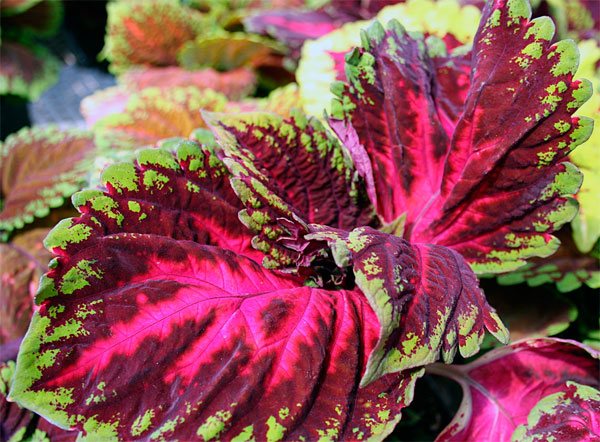

- Coleus Forskolia - also called tropical mint. It is used not only for decorative purposes, but also in Ayurvedic medicine. Outwardly, it is most often distinguished by a light green edge of ovoid leaves and a bright red or purple center. It also has notches in shape, although not so clearly expressed;
- Coleus Hybrid - grows in height from 50 to 80 cm. Straight or curly succulent stem has fine pubescence. The broad leaves are oval or ovoid and have wavy edges. The hairs on their surface are sparse, heterogeneous - long and short. The color is diverse - it can be green, red, purple and other shades. Flowers are collected in a complex brush.There are many of them, but they also have no particular decorative value;
- Coleus Rainbow - a compact variety that can stretch up only 30 cm. It got its name from the combination of many flowers on its leaves. They can be green and yellow, or red and burgundy. They are broadly oval in shape, corrugated along the edge. Inflorescences have a lilac-blue tint, also collected in ears;
- Coleus Dog - a low-growing plant up to 15 cm in height. It blooms in blue, less often yellow flowers. Most often, it combines a gamut of green and red on its leaves. It is also famous for the fact that its smell scares cats away. Therefore, it is better not to keep the owners of these Coleus Dogi pets at home;
- Coleus Avatar - has large and wide rounded leaves with a pronounced surface texture. In the middle of the leaf there is an abundance of green and yellow specks, the edges are painted with dark purple. In general, it is a densely branched and fairly large bush;
- Coleus Russian size - the largest variety, its leaves reach the size of a human palm. The plant branches well, has leaves with a pronounced curly edge and a bright color combination that creates unique patterns on the leaf surface.
Coleus care video
Coleus is called the most beautiful houseplant. In addition, the flower is quite unpretentious and does not require special knowledge and skills. To grow a lush, bright bush, you will need moderate watering, bright light, temperatures within + 15- + 28 throughout the year, high air humidity, nutritious soil and a complete absence of drafts and temperature changes. It is quite possible to create such conditions even for novice growers.
You can also share your Coleus care secrets. If you have any questions - ask them in the comments below, we will be happy to answer them.
Leaving during flowering
Flowering is always an energy-consuming process. And since the flowering of Coleus does not represent any decorative effect, it is necessary to save the plant's reserves of strength for the growth of greenery than harvesting seeds.
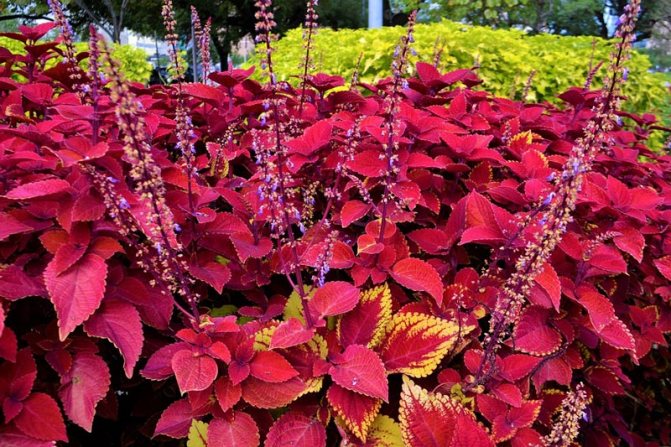

The exotic will bloom with long spikelets with small lilac flowers.
From the very beginning of the ejection of a flower spikelet, it should be removed. The cut site does not need processing.


